Eileen Croxford: Finding ‘Pingrup Pink’
“We were on a trip to Kalgoorlie in the caravan and car in 1970. My husband got fed up with me shouting out ‘stop, stop, stop,’ but this time we were on that road that goes off Gnowangerup-Jerramungup Road up to Pingrup, not far from Borden, and I just happened to look – it was all bush, it wasn’t any farms or anything – and I just saw this mass of pink and I said ‘Oh stop Cliff, stop, I must go and see what that pink is.’
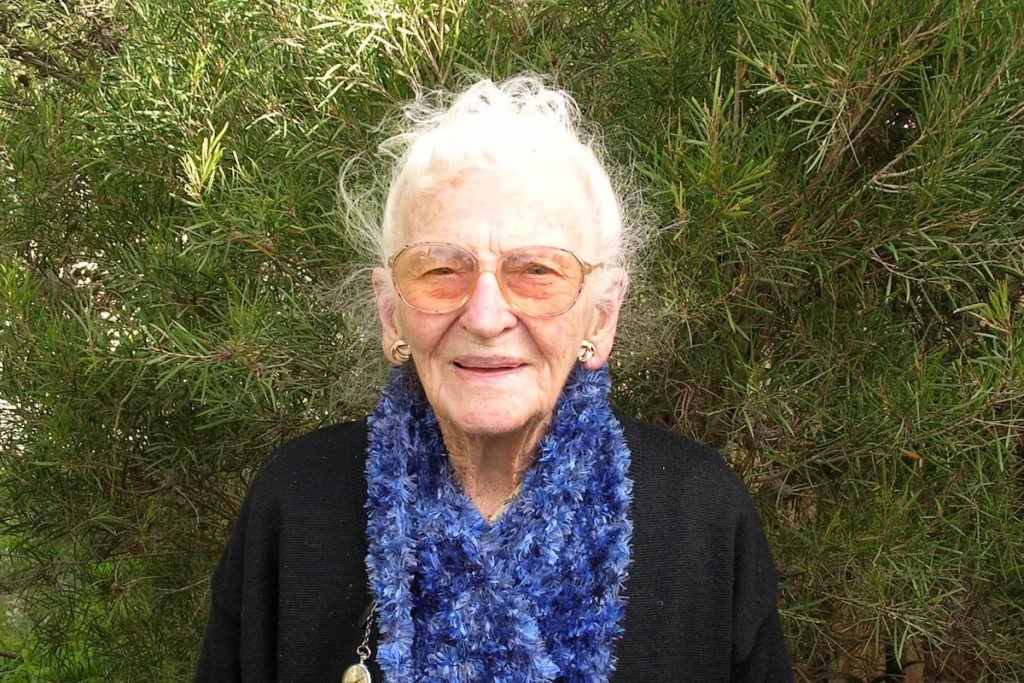
Eileen Croxford in Albany, 2004
Image: Marg Robertson
He did and when I went over there (in England you would have said it was copse because copse is always a big area of things all the same size and that is just what it was; it wasn’t any taller than me) and it had these beautiful sprays of real baby pink, so I thought what on earth is it. I knew it was a eucalypt so I collected these seeds and collected a piece of flower and pressed it.
We went on to Kalgoorlie and decided to come back the same way, so I said to Cliff, ‘We will stop and have a look at that pink eucalypt again,’ but there wasn’t a thing there.
A big ball and chain had been right through for miles and miles and miles and miles and there was nothing there – it was all waiting to be burnt. It was all dead.
I only got four plants out of the seed and I gave two away and I kept two myself: one lived and one died; the living one is still there at home in Spencer Park.
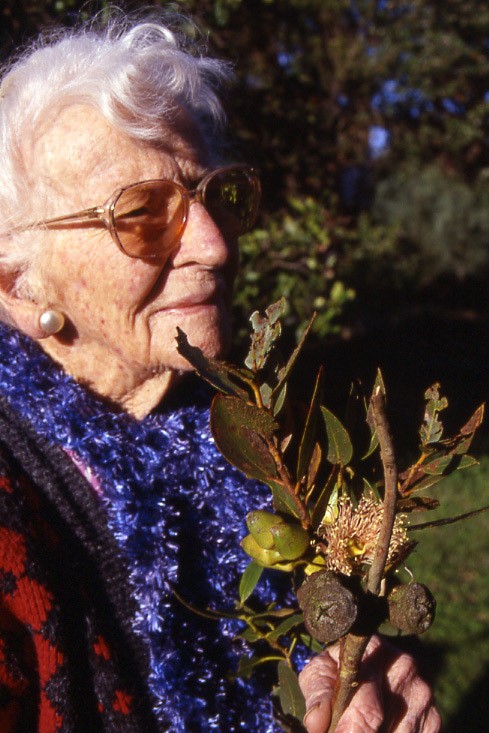
Eileen with her Pingrup Pink
Image: Nathan McQuoid
I think that was our greatest fear, the fact that the country was being cleared and nobody knew much about it. All the botanists that come down, they always say, ‘Oh you must keep on collecting.’
I have asked everyone who is going to have a go at propagating it, will they please name it Eucalyptus ‘Pingrup pink’.”
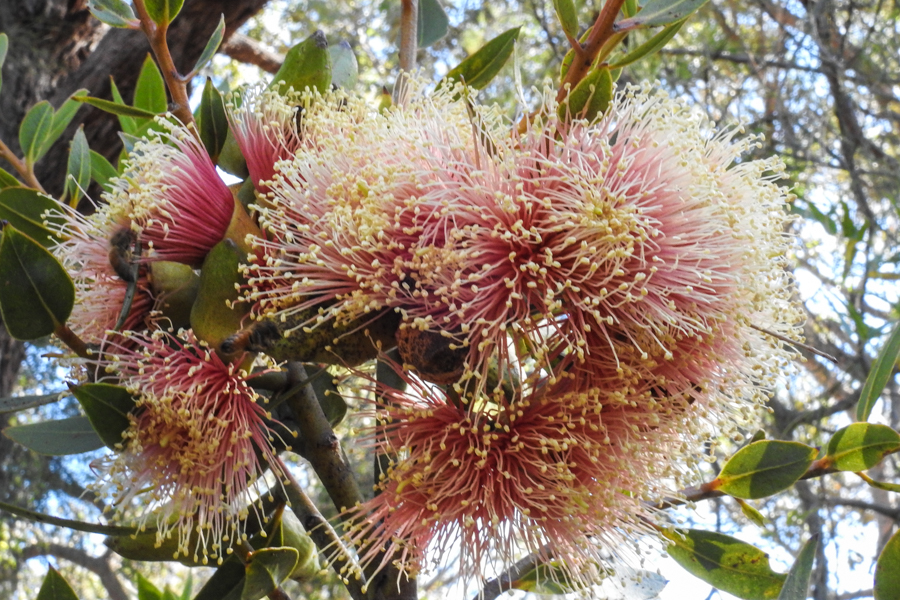
Eucalyptus ‘Pingrup Pink’, Kings Park & Botanic Garden, Perth
Image: Hazel Dempster
Is a return to the wild possible?
Despite scientific searches of the area in recent years Pingrup Pink has never been seen in the wild again. A single tree was grown from the seed that Eileen collected in 1970, and additional plants have been grown from tissue culture and cuttings from this tree. Because these are all clones, there is effectively only a single genetic individual of Pingrup Pink in existence. There has been speculation that Pingrup Pink may be a hybrid, though no-one really knows who the parents could be, if it is.

Image: Kings Park & Botanic Garden
In 2020 there was a breakthrough when some carefully controlled self-pollinations were conducted at Kings Park, from which a precious eight apparently viable seeds were collected. These were sown and three seedlings germinated.
While three is not a high number, these are the first seedlings to have germinated in over 50 years and shows that viable seedlings can come from self-pollination.
As the three seedlings are all more or less the same, and are true to type of the parent stock, it is now more likely that Pingrup Pink is indeed a eucalypt species in its own right, and not a hybrid.
Work is continuing to confirm this, and to produce more seeds from new self pollinations. If healthy seedlings can be produced, even though the genetic variability of the seedlings will be very low, there is a real chance that this lonely and once almost forgotten eucalypt could one day be replanted back into where it once grew in the Shire of Kent, bringing this species back from the very cliff edge of extinction.
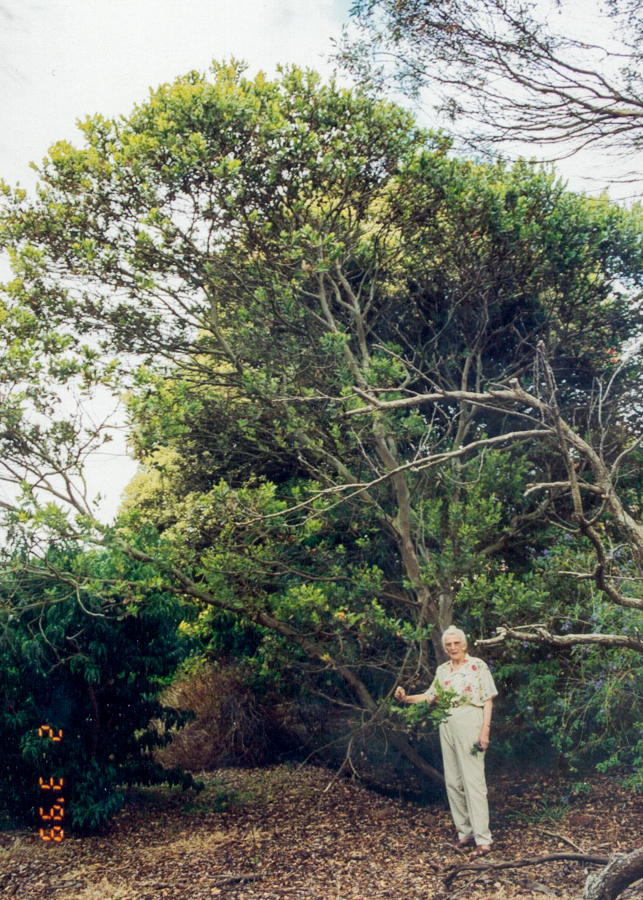
Eileen with her ‘Pingrup Pink’
Albany, 1999
Image: Hazel Dempster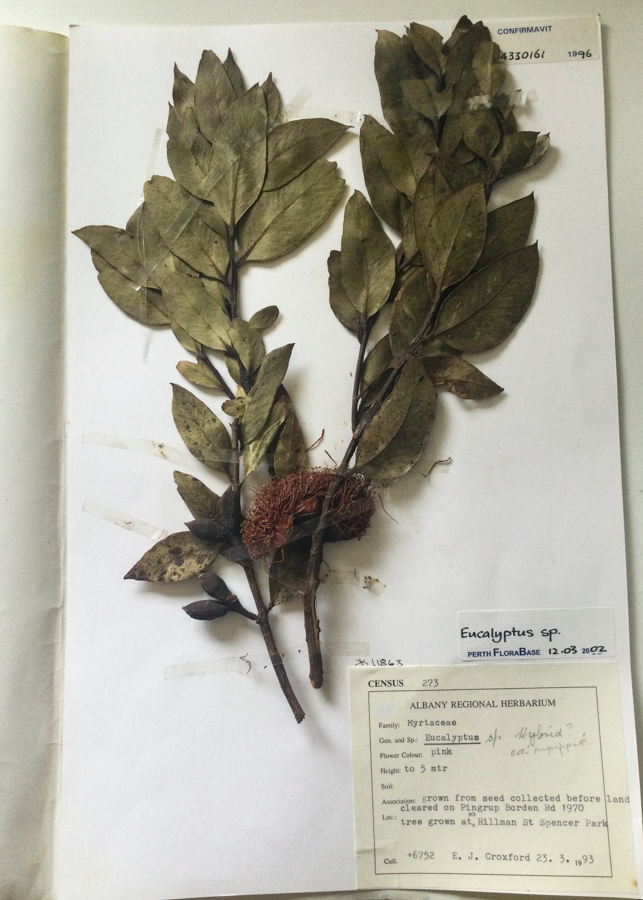
Eucalyptus ‘Pingrup Pink’ pressing
Albany Regional Herbarium
Image: Supplied
Eucalyptus ‘Pingrup Pink’ buds, blossoms & fruit
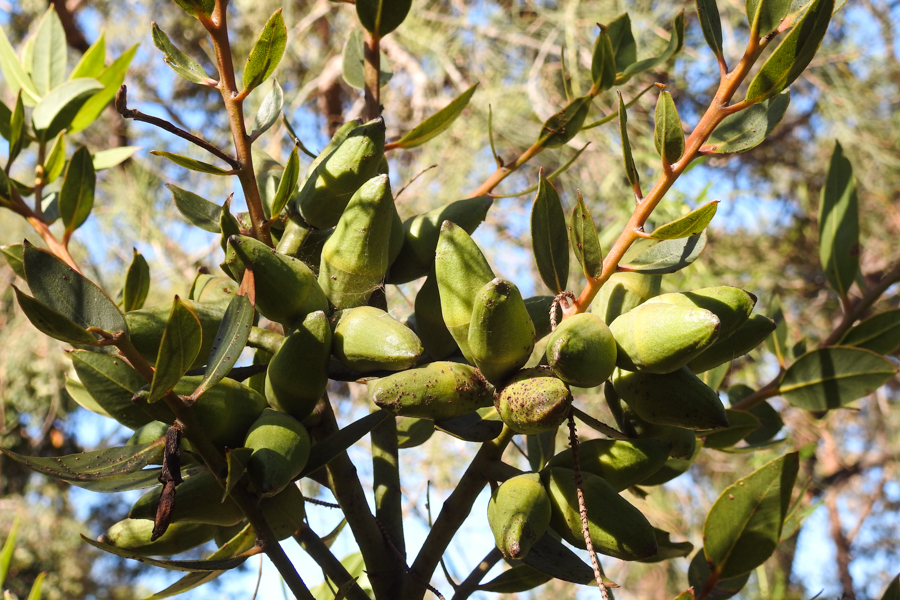
Eucalyptus ‘Pingrup Pink’ buds, Kings Park & Botanic Garden, Perth
Image: Hazel Dempster
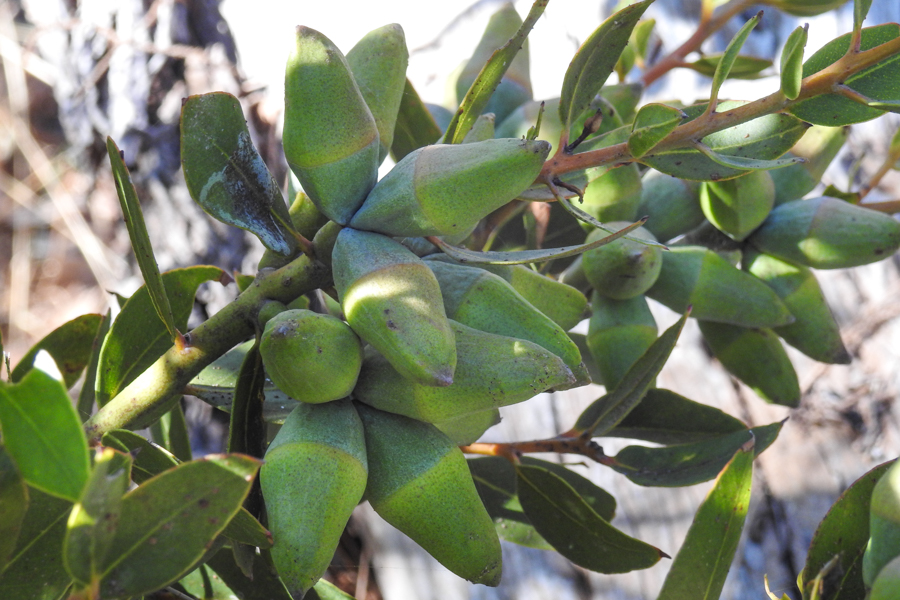
Eucalyptus ‘Pingrup Pink’ buds, Kings Park & Botanic Garden, 2018
Image: Hazel Dempster
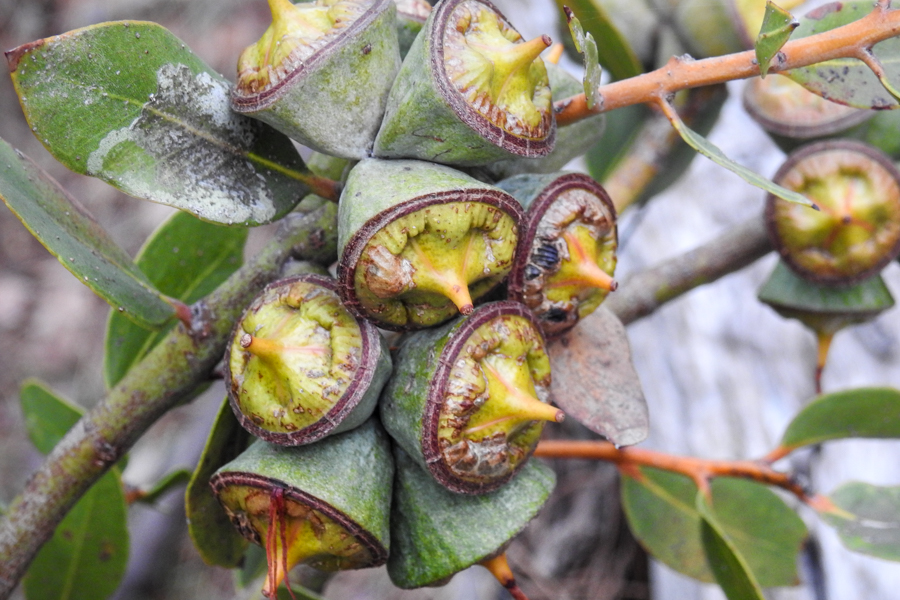
Eucalyptus ‘Pingrup Pink’ fruits, Kings Park & Botanic Garden, 2018
Image: Hazel Dempster
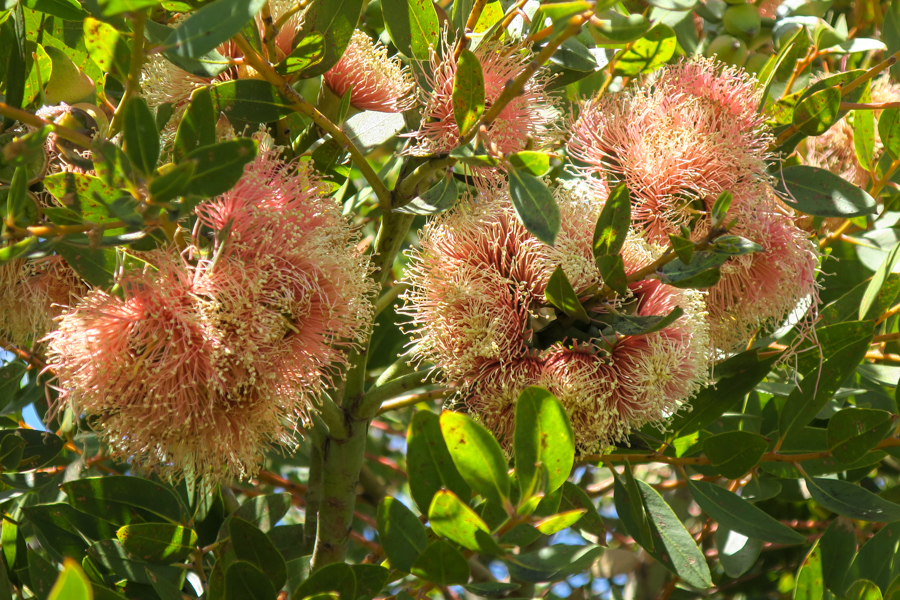
Eucalyptus ‘Pingrup Pink’ blossoms, Joondalup, 2019
Image: Hazel Dempster
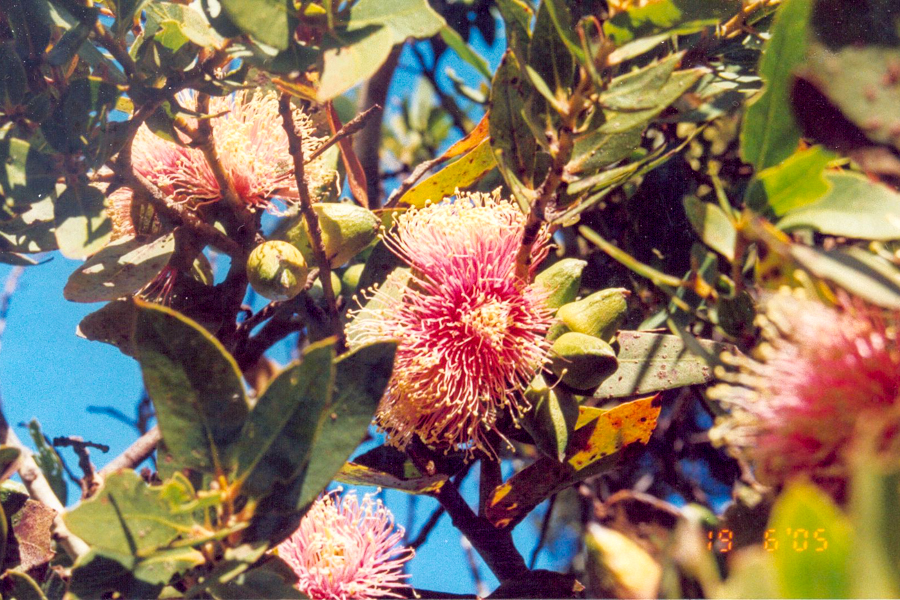
Eucalyptus ‘Pingrup Pink’ blossoms on original tree grown
from seed collected near Pingrup by Eileen Croxford, 2005
Photo: Hazel Dempster
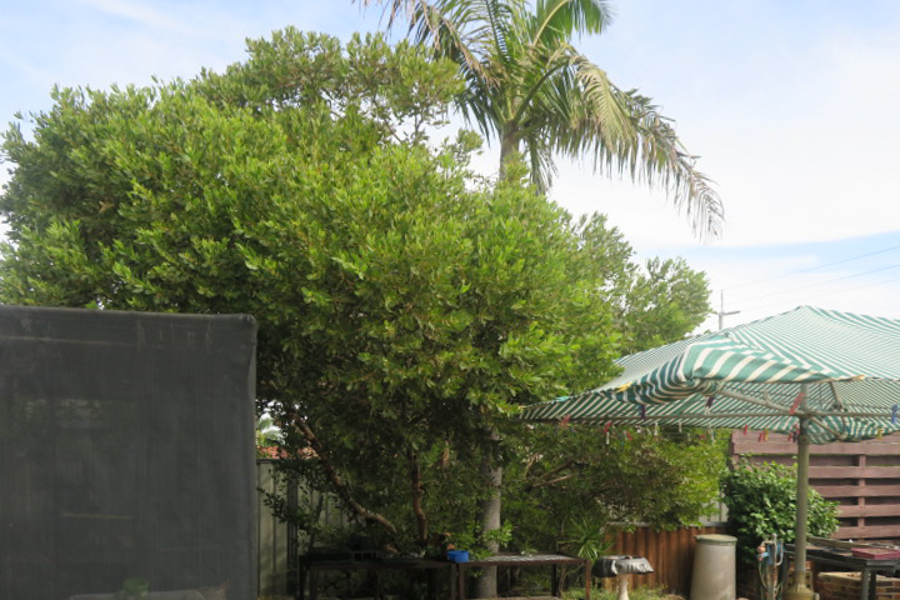
Eucalyptus ‘Pingrup Pink’ Tree. Cutting grown from original, Joondalup, 2019
Image: Hazel Dempster
Thanks to Kevin Thiele and Hazel Dempster for their contributions to this article.
